Editor’s Note: The methods described below are not approved or recommended by the CDC for the sterilization of N95 respirators.
With the shortage of surgical and N95 masks in the country today, people are getting somewhat desperate.
Many people are making their own masks out of cloth, mostly because they don’t have any other option. But medical personnel can’t count on that. They are required to wear proper personal protection equipment (PPE) when at work.
The mask that everyone wants and the mask that has been touted as the one to use is the N95 mask. Designed to be a disposable mask, these have been in short supply since the beginning of the pandemic. People who have them probably bought them before the pandemic hit, as most businesses have given their stocks to local hospitals.
If you’re one of the fortunate people to have some N95 masks to use, you’re probably hoarding them, trying to get the most mileage possible out of them. That probably means that you’re not changing them when you should. These are disposable masks, intended to be replaced.
Related: 30 Supplies for Pandemic Survival
The big risk with not replacing your mask is that you could end up infecting yourself with the mask, rather than that mask protecting you. While the masks will physically last much longer than just one usage; if a mask is not decontaminated after each use, how can you be sure that it’s safe to use?
Fortunately, there are ways of decontaminating an N95 mask, even though most people don’t bother. If you use these techniques, rotating your stock, your masks should last much longer, giving you protection far beyond what would normally be expected.
Using Time to Sterilize Your Masks
Probably the easiest way to sterilize your N95 masks is to just let them sit. The CDC has quantified how long the SARS-CoV-2 virus can live, putting an upper limit on it at three days.
But that three days is on a hard surface, such as metal or plastic. Viruses don’t survive anywhere near on soft surfaces, as they do on hard ones.
Allowing your masks to sit someplace safe, where nobody is going to have contact with them, will allow the viruses to die, just by leaving them there.
If you can leave them there for four days, you can be sure that when you go back, your mask will be free of the virus and ready to be used again.
Related: How I Prepare for a Shopping Trip in Light of COVID 19
Using Heat to Sterilize Your Masks
The French Scientist Louis Pasteur discovered in the mid-1800s that microscopic pathogens, specifically bacteria, die at 159°F.
That knowledge has since been extended to include bacteria. So, if all we’re concerned about is killing the virus, all we need is to heat the mask up to more than 160°F.
The easiest way to do this is to put it in one of the better food dehydrators. While your oven will get much hotter, we really don’t want to overdo the heat. If we can do it at 165°F, to give ourselves a few degrees extra of tolerance, then it will be much less damaging to the materials used in the filter to decontaminate it at that temperature, rather than 200°F.
While 165°F or even 200°F won’t cause the paper in the filter to burn or the rubber in the elastic band to melt, it will dry the materials out.
So you may see some drying of the rubber in the masks after a few tries, making it more likely to break.
Using UV Light to Sterilize Your Masks
It has been discovered that ultraviolet light (UV light) between 200 and 400 nanometers is uniformly deadly to both bacteria and viruses.
Hospitals use this to decontaminate rooms as well as putting wall scones in the hallways with UV light to kill any bacteria or viruses in droplets, floating in the air.
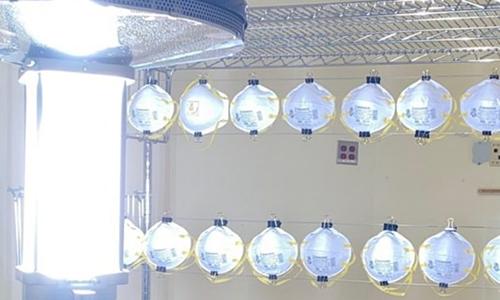
You can find plenty of UV light by stepping outside your door. The sun provides UV for free, usually much more than we want.
But we can use that sunlight for good, by leaving those masks out in the sun and allowing it to kill the virus. Please note though, this does not work well on an overcast day, as the cloud cover will block as much as 70% of the UV.
Another option is to use a UV light indoors. There are special lights used for this purpose, but you can also use a “black light” of the type used with fluorescent paint. These operate at 320 to 350 nanometers, which is in the range necessary to kill the virus.
Related: How to Decontaminate Yourself in 5 Easy Steps when Back at Home from Infected Areas
Three Different Chemicals You Can Use to Sterilize Your Masks
Chemical sterilization is one of the most common means of disinfecting. The problem is, we’re dealing with a paper mask, so we have to be a bit careful about how we go about using it. Too much of a good thing could end up destroying your mask.
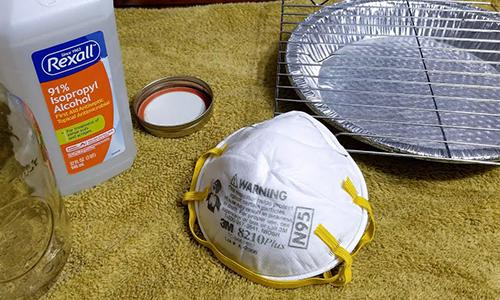
So what are these three chemicals?
- Chlorine bleach
- Rubbing alcohol
- Hydrogen peroxide
Editor’s Note: Using these 3 substances listed above will remove the static charge in the microfibers in N95 facial masks and can reduce filtration efficiency well below its factory designed 95%. So please use them at your own risk, and ONLY if it’s the only solution you have left. After all, something is always better than nothing.
One thing that’s needed for this is something to act as a mold or form. This can be just about anything that is waterproof and about the same size as the inside of the mask. A tennis ball will work or an inverted glass. As long as it can hold the mask in the right shape until it dries, it will be okay.
In the case of any of these, we want to spray a fine mist of the chemical on the outside of the mask. Spray it thoroughly enough to cover the entire surface, without soaking the mask. Then set it on your mold and leave it to dry. Please note that it must dry fully before you use the mask, as these chemicals can be toxic if you breathe them in.
Chlorine bleach will evaporate overnight, which is just about ideal for using the mask again the next day. But even if you use one of the other chemicals listed above, you still want to give the mask overnight to sit, allowing the disinfectant to dry thoroughly.
Important Note: All three of these disinfectants can be poisonous when inhaled. When you first put a mask on, which you have sterilized for reuse, take a good whiff and make sure you can’t smell the disinfectant. If you can, set it aside and don’t use it. Rather, rinse off the disinfectant and allow the mask to air dry, before trying it again.
You may also like:
Why Is FEMA Tracking Down Preppers? This Is How They Prepare For A Food Crisis
10 Medical Supplies You Need To Stockpile Before It’s Too Late (Video)
Outrageous, But Effective, Medicines People Used In The Past
The Black Walnut Hull Remedy That Cleans Your Intestines Of Parasites

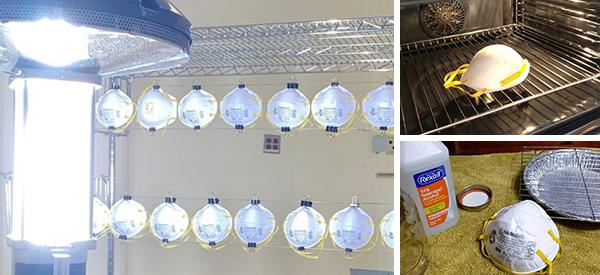
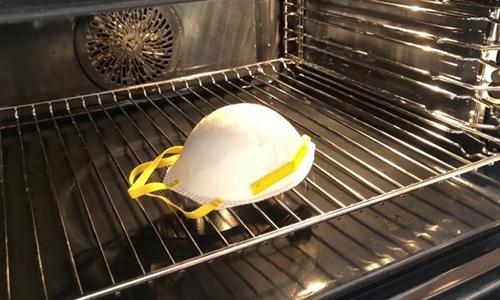
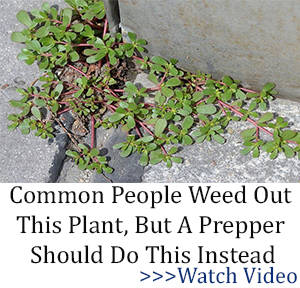







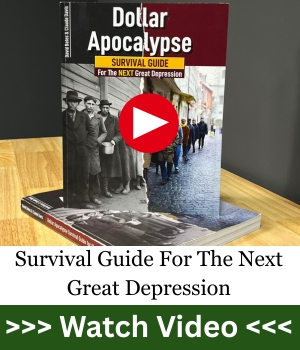



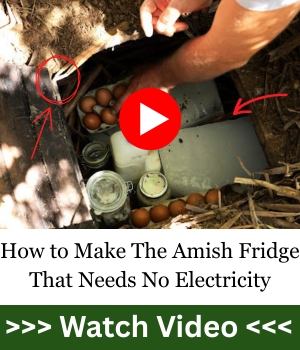

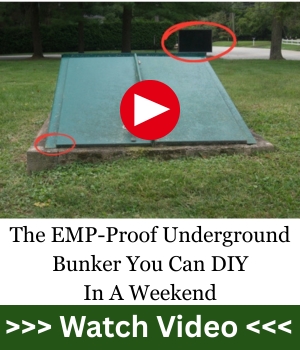






I have been putting our family’s into a container that I direct an ozone generator into. I let the generator run for 15 minutes and then let it rest an additional hour or more.
I think the article is misleading with regard to UV sterilization. Only the short wavelength UVC will do the job. The drawback is that it’s extremely dangerous if mishandled. A few seconds of eye exposure results in permanent damage.
I didn’t think it was legal to sell a ‘medical grade’ UV sterilization source on an OTC basis such as Amazon. ‘Medical grade’ UV lights are different than the UV lights normally used. They are also much stronger than those used in tanning salons. The hospital, where I work, use them and when they do, those rooms are sealed up tight. They are not constant, but use a slow strobe. Lasts for about 15-30 min, depending on the ‘bug’ they are trying to kill.
“Medical Grade” sterilisation is allowed to be sold. It is the same (UV-C) type of lamp that is used in pond UV filters. It isn as the article says, the blacklight type. In fact the tube is clear, and as someone else has said, harmful to the eye and skin. In fact I purchased one from Amazon and use it to sterilise everything that comes in my door.
I live in a hot climate so I leave mine on dashboard where sunlight heats it up very well! You can also spray w Lysol.
Lysol does not kill Corona Virus, because it is not alive, not a bacteria. It is protected by a lipid shell (fat), so it needs to be dissolved therefore hot soapy water, or alcohol.
Thank you for the heads up! Been using Lysol Spray on shoes. Text on Lysol Disinfectant spray can says “kills 99.99% of viruses & bacteria”. Same text on Clorox Disinfecting Bleach. Will have to double check material safety data sheets.
The EPA has established a list of disinfectants (List N) that meet their criteria for use against SARS-CoV-2, the cause of COVID-19. The following Lysol products are those that meet either the EPA Viral Emerging Pathogen Policy or have human coronavirus claims.
Disinfectant Sprays
Lysol® Disinfectant Spray EPA #777-99
Lysol® Disinfectant Spray Max Cover Mist #777-127
Lysol® Disinfectant Spray Neutra Air 2-in-1 #777-136
Lysol® IC Quaternary Disinfectant Cleaner EPA #47371-129-675
Disinfecting Wipes
Lysol® Disinfecting Wipe EPA #777-114
Excellent!! Much appreciated!!!
Not everyone can bug out. That’s a luxury! Lots of essential workers have to stay in place in places that are not the best and in some cases, ground zero for whatever comes along to do our job and tackle it head on knowing that the family is safe and has what is needed. That said, we have to be prepared in place so that we can keep going. Lysol has been a go to here! It’s an easy fix! So relieved to know it does the job!
I think the reason it says it kills bacteria and viruses is because it has bleach in it. Check the contents label and see if it doesn’t list bleach as one of the ingredients. I know a couple of Lysol products that we have contain bleach.
Corona Virus has been listed on the Lysol can for years.
If you wipe it down good. Lysol will kill it.
When you wipe it down. It breaks the lipid shell.
You don’t have a clue what you are talking about when you say not to use Lysol. Read the f’n label …..you are giving people erroneous information. You need to keep your mouth shut if you don’t know what you are taking about, factually speaking…..
Been doing it a long time. You use very very little lysol.
With a bit of warm water. Wipe the 95 Mask off good. Let dry good.
P.S. This will not work will on the paper mask.
Ones you wipe the mask down good with Mr.Clean. Lysol.
It will break the shell fat.. Then it will die. Keywords. Wipe down good. Very good.
How about using my CPAP ozone machine? A small pump that blows into my mask and tubing inside a confined space (think small satchel). Wouldn’t that kill the virus?
Early on I went one step beyond. I purchased a UV screw in bulb from Amazon and made myself a wand out of a short piece of PVC pipe and wired it up so I can plug it in. No biggie if you can still get the bulb. Mine was thru Amazon.
I use it for disinfecting just about everything, masks included. Just be damn careful to shield eyes. UVC rays will harm eyes
Well, you probably got your bulb before this started as these chinese made wands and bulbs are selling for 10-20x what they were selling for before C19 hit.
N95, N99, N100 Masks Not Effective for Protection Against COVID-19 Virus
The N95 stamp on a mask means that when subjected to careful testing, the mask blocks at least 95 per cent of 0.3 microns (0.00003 cm) size test particles.
The N99 stamp on a mask means that when subjected to careful testing, the mask blocks at least 99 per cent of 0.3 microns (0.00003 cm) size test particles.
The N100 stamp on a mask means that when subjected to careful testing, the mask blocks at least 100 per cent of 0.3 microns (0.00003 cm) size test particles.
Some of these masks have a valve in them. This is a one way exhaust valve so that when the wearer breathes out, a large amount of the water vapor in their breath is expelled through the valve, allowing the mask to be more comfortable to wear, and last longer, because the water vapor is not absorbed by the mask.
A study by BMC found that voluntary coughs generated droplets ranging from 0.1 – 900 microns in size. Droplets of less than one-micron size represent 97 per cent of the total number of measured droplets contained in the cough aerosol.
A sneeze generates up to 40,000 droplets, of which most are smaller than 100 microns.
The corona virus molecule is about 0.1 to 0.125 microns (0.00001 to 0.0000125 cm) by comparison and is known to be carried in pulmonary (cough) droplets.
_____________________________________________________________
Note that getting a N95/N99/N100 mask wet, or even bending it, ruins or greatly reduces its efficiency. Spraying the outside of it with a disinfectant, an alcohol solution, etc, ruins it permanently. Putting it in a microwave oven ruins it. N95 masks were originally designed to be disposable, used for no longer than 8 hours before discarding them. N99 and N100 masks have a shorter usable lifetime because they block more particles, and they are also meant to be disposable.
(The only difference between a plain N95 mask and a surgical N95 mask is that the surgical N95 mask protects against forcibly ejected liquids (primarily blood) penetrating the mask from the outside during surgery).
I believe that so many doctors, nurses, orderlies, EMTs and police get the corona virus is because: 1. These masks do not provide protection for the eyes. 2. These masks do not provide adequate filtering of the corona virus. 3. The mask users are not wearing them properly (and are not removing and disposing them properly) and/or are not caring for them properly.
____________________________________________
The minimally effective mask to wear for protection against the corona virus is a positive pressure, full face mask, with a filter that blocks particles larger than 0.1 microns (0.00001 cm) or smaller, such as an ULPA filter (ULPA is an acronym for Ultra Low Particulate Air. An ULPA filter can remove at least 99.999% of dust, pollen, mold, bacteria and any airborne particles with a minimum particle penetration size of 100 nanometers (0.1 micron)). The commercially available ones start at about $180.00 and go up to about $1,300.00. You can occasionally see someone wearing one on TV videos of medical personnel in hospitals.
Some of these masks have the filter(s) and sometimes the air pump and battery pack, attached to the mask, making them front heavy and thus awkward to use.
The most comfortable ones to use (and the safest, because they have a better seal against the face because of their lighter weight) are the ones that have the air pump, filter and battery pack attached to a belt around your waist.
However, using this type of mask and wearing a Tyvek suit over their clothing, the corona virus can penetrate it the suit, so it provides a very minimal protection.
And the PPE gowns (which the corona virus can easily penetrate) that most medical personnel wear, is open at the back, so provides almost no protection at all.
___________________________________________
You can see people wearing a positive pressure environmental suits with a built in face plate in laboratories and sometimes in hospitals on the TV news. These suits are provided with an pressurized air supply that pumps air to the suit through a hose. This pressurized air makes the suit blow up slightly like a partially filled balloon. If working with the corona virus, the air pressure supply should have an ULPA filter connected to it.
This type of suit with face plate and an air pressure supply that has an ULPA filter, is the only really effective protection against the corona virus, if proper decontamination procedures are followed after exposure.
Each suit ensemble costs well over $1500.00 each. An air pressure supply unit with an ULPA filter costs about $900 and up, depending on the amount of cubic feet per minute of air flow it supplies. Depending on the temperature of the air in the room where the air pressure supply is located, and the activity of the user, the air pressure supply may also require adjustable refrigeration of the supplied air, which greatly increases the cost of the air pressure supply.
I assume why this type of protection is not provided for medical personnel working in COVID19 hospital rooms is the cost, not because it actually protects the users.
I firmly believe that if the medical personnel in COVID19 hospital rooms wore at least a full face mask with an ULPA filter, there would be a huge reduction in their infection numbers and deaths.
You could have shortened your comments by saying
“Only a full body CBRN suit , CBRN Full Face mask (with CBRN filter),CBRN boots and booties, CBRN gloves and Chem Tape to seal it all up will provide protection from Covid 19. Otherwise , write your will because YOU WILL DIE!
You mean…a full body condom, I think. I see the ‘fear’ is strong in you.
And we all know that “fear leads to the Dark Side!”
I personally like all the information and I feel rather than limit the information limit your time reading
Great insight on the technical end of these. Declaring the use is to appease the bulk of the people to make them think there is hope if they do as they are told. They have not been informed that OSHA requires anyone required to wear any type of respirator is required to have a pulmonary function test as well as a fit test, Not everyone can safely wear a respirator Protection is only as good as how well the device is used other wise you may as well leave it in the box. Educating your self on the product and its use is the key to its success.
Chuckster: A couple of factors to consider: use of APRs or PAPRs requires initial and ongoing (annual) training/refreshers and at least semi-annual fit-tests. In addition, supplies are even more limited than N95s and KN95s. Training up all the staff that SHOULD be protected by these methods is impracticable. In industrial hygiene, engineering and institutional controls are preferable to PPE in every case. Logistical issues are forcing some to re-use lower level protection intended to be single-use disposables as “better than nothing”. Which it is, if done properly. As to particle size, you ignore the electrostatic adsorption that occurs with some sub-0.3 micron particles, including viruses, which is a significant factor in the effectiveness of N95 and KN95 masks. In the long run, retrofitting hospital (and possibly other) HVAC systems with UV treatment and/or additional filtration, portable positive pressure workspaces etc. will be more effective as engineering controls than trying to keep everyone supplied with PPE.
I bought a couple of boxes of N95’s around 3 years ago when a Prepper friend told me I should get some. This was a godsend advice because I was able to donate on box of 20 early on in this situation to my local hospital emergency room before they started receiving PPE supplies. I have been rotating the few we kept in a paper bag for 4 days and lately started baking them at 170 for an hour if I need to go out again.
The masks I have are clinical (not industrial) but N95 is N95. I will say that ours do not have the vent for exhalation so one can only sit or walk slowly through the store or it is too hard to breathe.
TAKEAWAY POINT: Get the N95 masks with the vent when this blows over and you can get them again.
Stay safe and may God have mercy on us.
It is important to NOTE that ANY mask with an exhalation port (vent) ALLOWS YOUR exhaled liquid particles into the atmosphere, thus endangering others nearby if you are infected. The protection of un-vnted masks works in both directions, while the vented ones protect only the wearer!
Thank God I am not sick if everyone wears a mask it wont matter per say. I found the non vented mask makes me want to sleep end of story.
Bless you and thank you for some down to earth good advice. This is so helpful and as always, I appreciate all your efforts to keep us informed and safe.
It is my opinion that it isn’t necessary to soak the mask in the disinfectant in order to be effective. I haven’t been soaking my masks in alcohol. I spritz the alcohol from a bottle that releases a small spray with each depression of the knob. I think it was intended for perfume use. I assiduously cover the surface of the mask with the spray making sure that some spray is on every square inch of the mask.
The CDC test that was referenced in my article on how I dress for a trip to the store and the measures I take indicated that roasting the little critters at 40°C or 105°F killed them. 165°F is for bacteria. I can’t recall how long they were roasted at 105°F. I will go back and check the report of their test and post it as soon as I find it.
I haven’t measured the heat in my clothes dryer and haven’t thought of a really good way to do that, but based on how hot the clothes feel if I have dried them on the hot cycle, I feel it must be over 105°F. That possibly could be another way to sanitize your mask is to put it in the clothes drier for 15 minutes on high heat.
Be careful. I would use a mask that you were going to discard anyway to see if that period/heat combo is deleterious to the construction of the mask.
I find a lot of handheld UV “wands” on Amazon that only operate in the Wavelength of 270-280nm. They claim 99% “sterilization” in this range and that 10 seconds is “enough”.
Thoughts?
Those small handheld wands are NOT POWERFUL. So, it is critical that they be held in VERY CLOSE proximity to whatever is being disinfected! I also suggest DOUBLING the exposure contact time recommended by the manufacturer.
You can find the answer to your question on line. In my perusing the two articles I posted but have not yet appeared, they discuss the wave length of UV light necessary to act as a disinfectant. My recollection is different from the numbers you list, but is hazy because I didn’t make any kind of note of it. I will search again because I want to make sure my UV light that I have ordered and paid for and which will be here in another month to six weeks will have the appropriate wave length.
I copied the below from Nature.com, It is a peer reviewed article by a science website. As one can gain from the article they found that UV in the range of 207 – 222 nm was effective against virus H1N1. That said, the particular wave length that you mention is beyond the 222 nm that this article discusses. What this article was particularly concentrating on was sanitizing public areas with a non-harmful UV radiation. As I know very little about UV rays other than too much is harmful, I really can’t comment on the effect of the wave length of your device. I would suggest that you do web research, looking for articles that have appeared in reputable periodicals and that have been peer reviewed for methodology and replicable results.
Far-UVC light: A new tool to control
the spread of airborne-mediated
microbial diseases
David Welch, Manuela Buonanno, Veljko Grilj, Igor Shuryak, Connor Crickmore, Alan W. Bigelow, Gerhard Randers-Pehrson, Gary W. Johnson & David J. Brenner
Airborne-mediated microbial diseases such as influenza and tuberculosis represent major public
health challenges. A direct approach to prevent airborne transmission is inactivation of airborne pathogens, and the airborne antimicrobial potential of UVC ultraviolet light has long been established; however, its widespread use in public settings is limited because conventional UVC light sources are both carcinogenic and cataractogenic. By contrast, we have previously shown that far-UVC light (207–222 nm) efficiently inactivates bacteria without harm to exposed mammalian skin. This is because, due to its strong absorbance in biological materials, far-UVC light cannot penetrate even the outer
(non living) layers of human skin or eye; however, because bacteria and viruses are of micrometer or smaller dimensions, far-UVC can penetrate and inactivate them. We show for the first time that far-UVC efficiently inactivates airborne aerosolized viruses, with a very low dose of 2 mJ/cm2 of 222-nm light inactivating >95% of aerosolized H1N1 influenza virus. Continuous very low dose-rate far-UVC light
in indoor public locations is a promising, safe and inexpensive tool to reduce the spread of airborne- mediated microbial diseases.
This is copied right from the CDC’s website on mask decontamination. It is not the whole article. I left out the portions pertaining to hydrogen peroxide vapor sterilization as I figured not too many of us have the equipment necessary for creating hydrogen peroxide vapor sitting in a corner of our tool shed. I have made notes on some of the methods described with my criticisms of the information rendered or information not provided.
It would appear that one method we can use is to steam the mask in the steam emitted from a tea kettle or perhaps a steam iron and steam the mask. That appears to be a successful method of sanitizing the mask without degrading its filtering capabilities.
“Decontamination and Reuse of Filtering Facepiece Respirators
“Vaporous hydrogen peroxide, ultraviolet germicidal irradiation, and moist heat are the most promising FFR decontamination methods
“Moist heat
Moist heat, consisting of 60°C and 80% RH caused minimal degradation in the filtration and fit performance of the tested FFRs [3, 9, 10]. Heimbuch et al. disinfected FFRs contaminated with H1N1 using moist heat, of 65°C and 85% RH, and achieved a minimal of 99.99% reduction in virus [14]. One limitation of the moist heat method is the uncertainty of the disinfection efficacy for various pathogens.
“Steam treatment
Steam treatment may be a suitable approach for decontaminating FFRs. The limited number of studies for steam report minimal effect on FFR filtration and fit performance and a minimum 99.9% reduction in H1N1 and bacteriophage MS2 [14, 15]. Fisher et al. used microwave steam bags, designed for disinfecting infant feeding equipment, to decontaminate six FFR models and achieved 99.9% inactivation of MS2 bacteriophage. Filtration performance of all tested FFRs scored above NIOSH certification requirements. Three FFRs were further evaluated for three cycles of steam exposure and demonstrated no change in filtration performance [15]. Bergman et al. also demonstrated acceptable filtration performance after three cycles of exposure to microwave generated steam [3]. Microwave generated steam had little effect on FFR fit after exposure to up to three cycles of steam [9, 10]. Using microwaves to produce steam to decontaminate FFRs is not without limitations. Not all microwaves are constructed the same and some are more powerful than others. The effect of higher power microwaves on FFRs is unknown. Furthermore, the metal nosebands of FFRs may cause arcing, sparks inside the microwave oven, during exposure to microwaves. — LCC NOTE: It works but you may short out your microwave from the aluminum nose piece. At a minimum, an interesting fireworks display while doing the sanitizing.
“Autoclave, dry heat, isopropyl alcohol, soap, dry microwave irradiation and bleach
Decontamination using an autoclave, 160°C dry heat, 70% isopropyl alcohol, microwave irradiation and soap and water caused significant filter degradation to both FFRs and particle penetration levels did not meet the levels that NIOSH would allow for approval. Decontamination with bleach caused slight degradation in filtration performance and created an odor that would not be suitable for use [2, 7]. — LCC NOTE: The problem with this test is that they do not describe how the decontaminants were applied, sprayed on, soaked in a solution, wiped on ???? We are left to speculate on the methodology of the test. It doesn’t tell us a damned thing to just say that those substances degraded the mask material when we don’t know how they were applied which in my opinion, at least, is a significant factor.
“Disinfectant wipes
Heimbuch et al. evaluated biological decontamination efficacy and filtration penetration following aerosol exposure of mucin or viable Staphylococcus aureus [18]. Following aerosol exposure, respirators were cleaned with three types of wipes: hypochlorite, benzalkonium chloride (BAC), or nonantimicrobial. Particle penetration following cleaning yielded mean values <5%. The highest penetrations were observed in FFRs cleaned with BAC wipes. The BAC wipe caused one sample of FFRs to exceed 5% penetration. Filter penetration following various decontamination methods was shown in this study to vary based on the decontamination method and the model of FFR.
"Ethylene oxide is a promising method with serious limitations — LCC NOTE: Good news for those of you who have a tank of ethylene oxide sitting in the garage.
"Microwave steam bags
1100 W, 90 sec (bags filled with 60 mL tap water)
Passed
Not evaluated — LCC NOTE: For some reason damage to the mask was not evaluated. I don't understand the value of the test if damage was not evaluated. Why go to the effort. That is just one of the criticisms I have of this whole article.
I use N95 masks, a plastic face shield, and nitrile gloves when I pick up groceries ordered at Safeway. After use, I seal the mask and gloves in a ziplock bag that gets set aside for 30 days. I’m assuming after 30 days I may reuse then safely because any virus is dead. I have enough masks and gloves to see me through this pandemic by rotating them this way. I leave the plastic face shield in the closed car where it heats up between weekly uses.
I reproduced this article and commented on it in my article on my expedition preps. Notice that the test mentioned is not identified nor is it suggested anywhere that the test has been peer reviewed for scientific methodology. There is a way to conduct scientific tests and that is always one of the things that is supposed to be scrutinized in reviewing the test for accuracy.
This from covid19.fas.org
“Will the coronavirus survive in the refrigerator or freezer?
“A 2010 study used two viruses that are related to the COVID-19 virus to look at the effects of temperature and humidity on viral survival. Researchers found that both lower temperatures and lower humidity helped viruses survive longer. In particular, at 4 degrees C, or 40 degrees F, and 20% relative humidity, more than two thirds of the viruses survived for 28 days. On the other end of the spectrum, at 40 degrees C, or 104 degrees F, and 80% humidity, the viruses survived for less than 6 hours.
This suggests that coronaviruses survive better on surfaces at colder temperatures. It is also expected that the virus would survive being frozen.
It is important to wash your hands and your produce, following sound food handling guidelines. Also, clean surfaces using approved disinfectants.”
The biggest error I see in this so-called test is that the viruses were kept at 40°F which is not freezing and as I pointed out in my earlier response to it there is a huge difference between 40°F and the freezing point of water which is 32°F. There is also another big leap between 32°F and 0°F, the temperature at which we are supposed to maintain our freezers and freezing compartments of our refrigerators.
To me, to make a leap from 40°F and say that it would appear that the viruses do well at colder temperatures is an unwarranted conclusion based on the test described.
I can survive fairly welt 40°F for six days without food if I have adequate clothing. I don’t think I can make the same statement about surviving for six days, with the same adequate clothing I wore at 40° if the temperatures are a constant 0°F. If I had to draw some sort of conclusion based on just that alone, I would tend to think by the time 144 hours had elapsed under the outlined conditions, I would not be in a viable condition.
Sunlight!!!!
Too many variables to make sunlight a viable option in my opinion. Is the sunlight bright with no haze, high fog, cloud cover or just plain old smog? Is there dust in the air from wind currents? Each of those elements interferes with the UV radiation of sunlight. Bright sunny day with not a cloud or haze in the sky, you are absolutely right as long as that condition lasts a sufficient length of time to do in the nasties. By the way, how long is that period of time?
Is there some reputable test that you are relying on? I saw a sketchy report that said “a government lab” had determined that sunlight worked without any parameters such as I have enumerated listed. Thanks a lot, government lab, (apparently an off shoot of golden labs and chocolate labs.
I don’t know how the N-95 filter is constructed but it seems like you’d have to treat more than the outside surface to sterilize one. Time might be the best option. I live in a rural county that has had 40 positive tests and no deaths and I never go anywhere so am not worried about masks. And if there is enough virus floating around in the air to make a mask necessary you’re probably gonna end up with big virus goobers in your hair, eyelashes, and clothes, too. I order online at a grocery in the closest town, when I pick my stuff up they come out and throw it in the back of the truck, I don’t even have to roll my windows down. Fresh produce goes in the garage sink for a thorough rinse, anything in a package gets wiped down with bleach, shoes on the porch, clothes in the washer, me in the shower. Because I’m an old man and that Covidia will kill me if it gets a hold of me.
One place I went into today was the game processor where I buy meat. The owner is a retired union meat cutter who has connections with small slaughterhouses all around the country. He says he will have meat through May but expects a major shortage starting in June. I went shopping for another freezer and discovered you just about can’t buy a new one now, people are stocking meat like toilet paper, but I got a good used one at a restaurant supplier, going to be lots of used restaurant equipment cheap this summer.
Mike: That is exactly what I am afraid of. We have just seen the tip of the iceberg. Everyone was so quick to shut everything down. I am reading another book about the 1918 flu epidemic. The author goes into the history of that pandemic and traces efforts to determine the genesis of the virus that caused the pandemic.
According to the author in 1957, there was a flu epidemic that caused 60,000 deaths. I was on Okinawa with Uncle Sam’s Misguided Children in 1957 and if there was a flu epidemic, the Stars and Stripes didn’t mention it or it was in small type on page 14. Of course, the news in S&S was heavily censored by the military, so it might have been all over the U.S. news and it was just censored out of S&S for the “morale of the troops.”
The point? We are about 60,000 deaths now as well as 30 million unemployed. Many of those unemployed who are gig employees or self-employed graphic artists or some other service business will not get unemployment. I think we are on the Titanic and the band is playing on. The big difference is that the rest of the world is probably going to go down with us.
Stephen Konkoly wrote a prepper novel called “The Jakarta Pandemic.” He describes a world wide epidemic and its effect on the preppier family the center of the book. It was written several years ago but is pretty prophetic. I wonder what he is thinking about his book now.
Regardless of what the CDC says…these masks, used in hospitals, etc. were never meant to be sterilized and used again. If they were hospitals would have been doing it for years to cut costs. It ‘can’ be done, but doing it at home is kind of ‘iffy’. Most of the manufactures state that if the mask gets wet, toss it and get a new one. I’ve worked as a RRT for 30+ years and there were days, on an eight hour shift, where I’d go through 30 masks, depending on where I was working and how many pts I had. The ‘rule’ is…You change your mask between each pt. for infection control. For COVID-19, though, that changed to…you get one mask a day…at least where I work.
I went to buy a black light but discovered the range isn’t from 200-400nm. This paper from the Illuminating Engineering Society says it’s more like 200 – 280nm. And if you look at lights that are sold for sterilization they are UV-C. According to the IES a black light in the 320 – 350nm range won’t have as much effect, if any.
https://cdn2.hubspot.net/hubfs/455757/IES UV report.pdf
Well, shoot. I was one of the first posters and I asked a question.
Not one person addressed my concerns at all! Go figure.
:/
Carl: I went back and looked at your question about your C-Pap machine. I know very little about C-Pap machines and so off the top of my head, I couldn’t give you any kind of answer. I don’t know about other posters to this list and their knowledge of said machines. If I were to try to answer your question, I would have to go on line and do research on the question. That’s is part of how I get some answers, always trying to carefully evaluate the information I am reading to determine its validity. You can see some of why comments on material that others apparently are relying on.
I would suggest if you seriously want to use your C-Pap machine to sterilize your masks and perhaps other items of personal protection that you do the on line research yourself. It would appear that no one visiting this site has the expertise you seek. If you become that expert, you can then be in a position to advise other readers of this list.
Good luck in your research. I hope to read a post from you regarding the advisability of using such a device for sterilization. It would be a big help to everyone else.
My wife has a pressure cooker. With all the settings set to the max it makes a great autoclave. I am in extremely high risk group, so that pressure cooker has been getting used for a lot of other non-food besides my masks.
I just pulled this off the internet at 12:30 5/3/20:
“COVID-19, the disease caused by the new coronavirus, is “stable for several hours to days” in aerosols and on surfaces, including plastic and stainless steel, according to a study published in the latest edition of the peer-reviewed New England Journal of Medicine.
The study was coauthored by scientists at the National Institutes of Health, the Centers of Disease Control and Prevention, UCLA and Princeton University. It was made available in print form on Monday, and aims to provide more clarity on the virus’s contagiousness.
This is how long coroanvirus survived:
• Cardboard: up to 24 hours • Airborne: up to 2-3 hours • Copper: up to 4 hours • Plastic and stainless steel: up to 2-3 days
The results of the study provide additional insight into the stability of the new SARS-CoV-2, or severe acute respiratory syndrome coronavirus 2, and suggest that people may acquire the virus through the air and after touching contaminated objects, according to the authors.
Factors effecting why the virus remains “stable”:
• Humidity and temperature • Air-conditioning • Open windows
• General air quality • Size of the room
“One theory: Emerging evidence suggests that people infected with COVID-19 might be spreading the virus without recognizing, or prior to recognizing, the symptoms. This would make disease-control measures that were effective against SARS-CoV-1 “less effective against its successor.”
As long as they stick to pure science, the New England Journal is considered a reliable source. It is only when they get into socio-legal issues that they stray into the world of wonder. Especially when they are talking about the Constitution and the Bill of Rights. Constitutional experts they certainly are not.
Please notice that the last paragraph starts out with: “One Theory. . . ” It is just somebody’s idea of what might be. Your guess as to what might be is a valid as whoever the unknown theorist is.
You didn’t mention how long an item needs to be exposed to an ultra-violet light to disinfect it. That would be an important aspect to know if you want to use this method.
I use Mr.Clean. We have 4 of them. Not paper ones.
I wipe the ones we use out with Mr.Clean. And let them sit for the day. And use the others.
Next!
With regard to a CPAP, I think the poster here was actually referring to his CPAP ozone mask and hose cleaning system. This is an ozone generating system that generates ozone which is then passed through the mask, CPAP machine and hose to disinfect them. While ozone, O3, an active and unstable form of O2 is known to kill many pathogens and bacteria I do not know of any specific studies that relate to it’s use for the COVID19 virus or any viruses for that matter. If anyone has any info on using ozone it would be useful.
I simply put them in a sink with hot, hot tapwater, add a little dishwashing detergent and a few capfuls of bleach. I swish around gently and then put them in front of a small room air filter to dry overnight. I also do my nitrile gloves the same way, I pat the gloves dry and turn them inside out when dry outside to dry the inside. Suggest holding by the opening dragging thru water to get inside filled when washing gloves.
Totally disagree with the opening picture. The oven will destroy the bands. ain’t no doubt about it. Since day 1 of this silly “pandemic” 1, was too slow to get mask at the big box. 2, every freak that never needs them daily bought them all. DRY WALLER HERE. 3, I have rustled all mine new and used from every corner of my shop and van. I keep them on the dash board . in the sun since day one. UV kills it since day one. they say so 60 days later.
Chlorine bleach
Rubbing alcohol
Hydrogen peroxide
Things I wrote in another forum here I was sorely lacking and morns bought more than they would ever need.
DIY Homemade Colloidal Silver Spray
Ingredients needed:
*Colloidal Silver 10ppm (I just checked Amazon and they have NOW Brand Silver Sol 4oz spray bottle for $13)
*2% Lugol’s Iodione (2oz runs about $14)
*Travel Spray Bottle
Instructions:
Add 20 drops Lugols Iodine per every ounce CS added to bottle. This will make a 2% dilution ratio. Spray inside of used N95 mask and allow it to air dry. It is now sanitized!
The pandemic of COVID-19 is spreading unchecked due to the lack of effective antiviral measures. Silver nanoparticles (AgNP) have been studied to possess antiviral properties and are presumed to inhibit SARS-CoV-2. Due to the need for an effective agent against SARS-CoV-2, we evaluated the antiviral effect of AgNPs. We evaluated a plethora of AgNPs of different sizes and concentration and observed that particles of diameter around 10 nm were effective in inhibiting extracellular SARS-CoV-2 at concentrations ranging between 1 and 10 ppm while cytotoxic effect was observed at concentrations of 20 ppm and above. Luciferase-based pseudovirus entry assay revealed that AgNPs potently inhibited viral entry step via disrupting viral integrity. These results indicate that AgNPs are highly potent microbicides against SARS-CoV-2 but should be used with caution due to their cytotoxic effects and their potential to derange environmental ecosystems when improperly disposed. https://www.ncbi.nlm.nih.gov/pmc/articles/PMC7486059/
Personal Note: The N95 mask does NOT stop the spread or transmission of Covid19. The only thing that mask is doing is preventing you from getting laid!